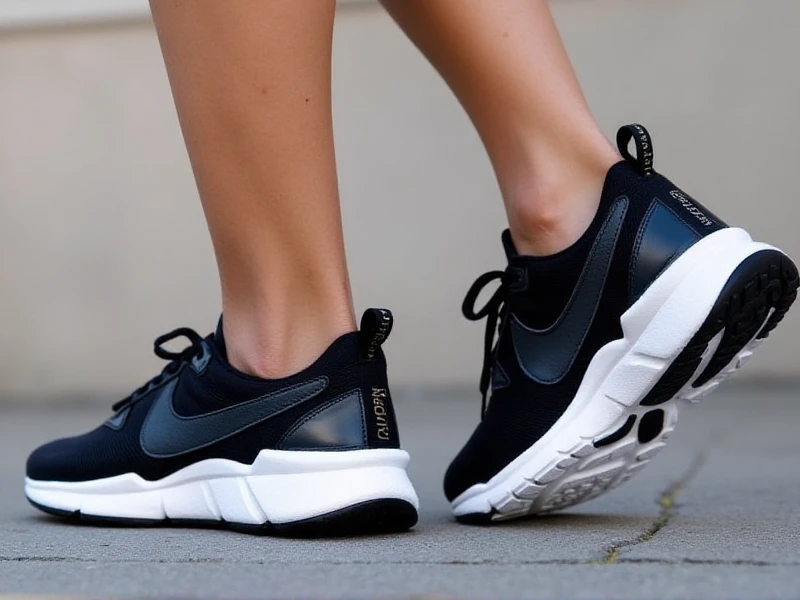The Ultimate Guide to Finding the Perfect Men's Running Shoes
2025-06-09

Finding the best men's running shoes isn't just about style; it's about performance, comfort, and injury prevention. With countless options flooding the market, choosing the right pair can feel overwhelming. This guide cuts through the noise, highlighting essential factors to help you find your perfect running companion.
Why the Right Fit Matters
Running places immense strain on your feet, joints, and muscles. Ill-fitting or unsupportive shoes can lead to blisters, shin splints, plantar fasciitis, or knee pain. Quality men's running shoes are engineered specifically to absorb impact, provide stability, and propel you forward efficiently. Investing in the right pair enhances your run, boosts performance, and keeps you pounding the pavement longer.
Key Factors to Consider for Men's Running Shoes
1. Foot Type & Gait: This is paramount.
Pronation: Does your foot roll inward (pronation), outward (supination), or stay neutral? Most runners have slight inward roll. Visit a specialty running store for a gait analysis. Shoes come designed for Neutral (mild pronators/supinators), Stability (moderate pronators), or Motion Control (severe overpronators).
Arch Type: High, low, or neutral arches influence support needs.
2. Running Terrain:
Road Shoes: Designed for pavement and sidewalks. Offer cushioning, flexibility, and often lighter weight.
Trail Shoes: Built for off-road trails. Feature aggressive tread, rock plates for protection, enhanced stability, and often water-resistant uppers.
Cross-Training/General Purpose: Suited for gym workouts or light running, but lack the specialized tech for dedicated road or trail mileage.
3. Cushioning Level: Preferences vary.
Maximum Cushion: Excellent shock absorption for longer distances or runners needing joint protection. Feels plush.
Moderate Cushion: A versatile balance for most runners and distances.
Minimalist/Barefoot: Thin soles for natural feel and ground connection, requiring strong feet/legs.
4. Shoe Drop (Heel-to-Toe Offset): Difference in sole thickness between heel and forefoot. Common drops range from 0mm (barefoot feel) to 12mm . Higher drops shift load to knees/hips; lower drops engage calves/achilles more. Beginners often find 8-10mm comfortable.
5. Weight: Lighter men's running shoes promote speed and agility ("racing flats"), while heavier shoes usually offer more cushioning and durability ("daily trainers"). Consider your primary running purpose.
Essential Features in Men's Running Shoes
Breathable Upper Mesh: Allows airflow to keep feet cool and dry.
Secure Midfoot Fit: Lacing systems or bands that lock the foot down prevent slippage without constriction.
Responsive Midsole Foam: Modern foams (ETPU, EVA blends) offer rebound, cushioning, and energy return. Durability varies.
Durable Outsole Rubber: Strategically placed high-abrasion rubber pods for traction and longevity.
Heel Counter: Firm support in the heel cup for stability and a secure hold.
Roomy Toe Box: Adequate space (about a thumbnail's width from longest toe to end of shoe) prevents black toenails and allows natural toe splay.
Top Men's Running Shoe Categories & Leaders
Daily Trainers (Versatile): Nike Pegasus, Brooks Ghost, ASICS Gel-Cumulus, New Balance Fresh Foam 880.
Stability Runners: Brooks Adrenaline GTS, ASICS Gel-Kayano, Saucony Guide.
Maximal Cushion: Hoka Clifton, Brooks Glycerin, ASICS Gel-Nimbus, New Balance Fresh Foam More.
Lightweight Speed/Racing: Nike Vaporfly/Alphafly (high-tech, high-cost), Saucony Endorphin Speed, adidas Adios Pro.
Trail Running: Salomon Speedcross, Brooks Cascadia, Hoka Speedgoat, Saucony Peregrine.
Tips for Trying and Buying
1. Shop Late Afternoon: Feet swell slightly during the day.
2. Wear Running Socks: Bring the socks you'll actually run in.
3. Get Measured: Both feet! Size may have changed.
4. Try Multiple Pairs & Brands: Fit varies significantly.
5. Run in the Store: Hop on a treadmill if available. Feel for heel slip, toe pinch, adequate room, and overall comfort. Comfort now is key. Don't assume "break-in."
6. Know Your Return Policy: Many reputable running stores offer generous test-run windows.
When to Replace Your Running Shoes
Watch for wear on the outsole, compacted or visibly compressed cushioning (press the midsole – it should feel resilient, not hard), or persistent aches unrelated to training increases. Most running shoes last 300-500 miles, but listen to your body and the shoe.
Conclusion
Finding your ideal men's running shoes requires understanding your unique feet, stride, and running goals. Prioritize fit, comfort, and function over trends. Take the time to research, analyze, and try different options. The right investment elevates your running experience, protects your body, and supports every stride towards your personal best. Don't settle – explore the excellent range of men's running shoes tailored for every runner.
Category: